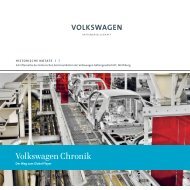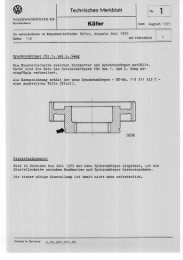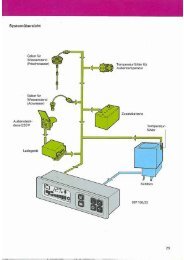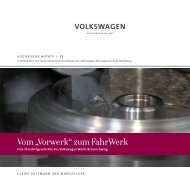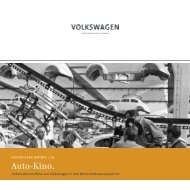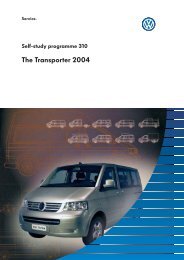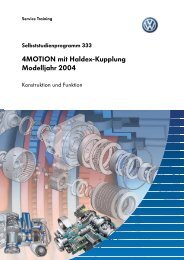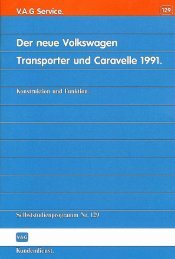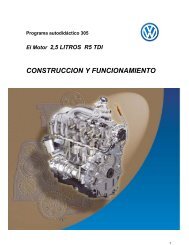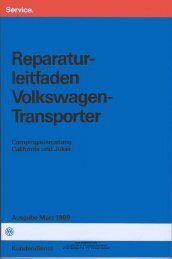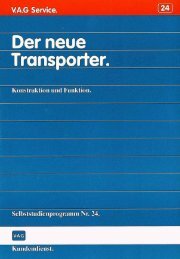HN 2: The British and their Works
HN 2: The British and their Works
HN 2: The British and their Works
You also want an ePaper? Increase the reach of your titles
YUMPU automatically turns print PDFs into web optimized ePapers that Google loves.
Notes<br />
1 For a more detailed discussion of Ivan Hirst’s achievements, see Ralf Richter:<br />
Ivan Hirst. <strong>British</strong> officer <strong>and</strong> manager of Volkswagen’s postwar recovery, Wolfsburg<br />
2003, p. 44 f. <strong>The</strong> Volkswagenwerk was not an isolated case. <strong>British</strong> <strong>and</strong> American<br />
officers acted as managers during the reconstruction of numerous companies, some<br />
of which were under Allied control for many years; cf. Alan Kramer: <strong>The</strong> West German<br />
Economy, 1945-1955, New York, Oxford 1991, p. 113. Wellhöner implicitly acknowledges<br />
the important role of the <strong>British</strong> trustees when he refers to the company’s early<br />
export-orientated approach as a significant factor in its success on the world market<br />
in the 1950s, stating: "<strong>The</strong> fordistic mass production only promised to increase the<br />
Volkswagenwerk’s profitability because it recognised the world market as an<br />
important cornerstone in its plans." Quoted from Volker Wellhöner:<br />
Wirtschaftswunder – Weltmarkt – westdeutscher Fordismus. Der Fall Volkswagen,<br />
Münster 1996, p. 192.<br />
2 Hans Mommsen/Manfred Grieger: Das Volkswagenwerk und seine Arbeiter im<br />
Dritten Reich, Düsseldorf 1996, p. 974. For a uniformly positive evaluation of<br />
Nordhoff’s leadership qualities, see Heidrun Edelmann: Heinz Nordhoff und<br />
Volkswagen. Ein deutscher Unternehmer im amerikanischen Jahrhundert,<br />
Göttingen 2003.<br />
3 Cf. Mommsen/Grieger, Volkswagenwerk, p. 949 ff. Contrary to the dates in this<br />
publication, the occupation of the "KdF-Stadt" (the town that would later become<br />
Wolfsburg) began on 11 th April 1945.<br />
4 Udo Riechert: Neubeginn im Schatten der NS-Tyrannei. Gewerkschaften und<br />
Betriebsräte in Braunschweig und Wolfsburg in den ersten Nachkriegsjahren,<br />
Braunschweig 1987, p. 180 f.<br />
5 Ian D. Turner: Das Volkswagenwerk – ein deutsches Unternehmen unter britischer<br />
Kontrolle, in: Josef Foschepoth/Rolf Steininger (eds.): Die britische Deutschl<strong>and</strong>- und<br />
Besatzungspolitik 1945-1949, Paderborn 1985, p. 283; Hans Mommsen: Das<br />
Volkswagenwerk und die "Stunde Null", in: Rosemarie Beier (ed.): aufbau west,<br />
aufbau ost. Die Planstädte Wolfsburg und Eisenhüttenstadt in der Nachkriegszeit,<br />
Stuttgart 1997, p. 130.<br />
6 Richter, Ivan Hirst, p. 29 f., 53; Questions to Ivan Hirst, January/February 1996, p. 3<br />
(Wolfsburg City Archive [StadtA WOB], Historical Archive [HA]); for the reorganisation<br />
of the zones of occupation, see Wolfgang Benz: Potsdam 1945. Besatzungsherrschaft<br />
und Neuaufbau im Vier-Zonen-Deutschl<strong>and</strong>, Munich 1986, p. 73.<br />
7 Richter, Ivan Hirst, p. 45 ff., 52 f., 81; for Hermann Münch’s assumption of office, see<br />
chief trustee’s preliminary report, undated (Volkswagen AG Corporate Archives<br />
[UVW], Z 69, no. 198).<br />
8 Richter, Ivan Hirst, p. 37, 40; questions to Ivan Hirst, January/February 1996, p. 2<br />
(StadtA WOB, HA).<br />
9 Undated report to Captain Gower [probably from 23 rd June 1945] (UVW, Z 69, no. 130);<br />
memor<strong>and</strong>um dated 25 th June 1945 regarding production <strong>and</strong> development projects<br />
(UVW, Z 69, no. 198). <strong>The</strong> informations about the destruction of the machine<br />
inventory differ slightly: According to Mommsen/Grieger, Das Volkswagenwerk,<br />
p. 954, 93 per cent of the machinery was intact; Ralf Richter: Die Währungs- und<br />
Wirtschaftsreform 1948 im Spiegel unternehmerischer Personalpolitik – Volkswagen,<br />
1945-1950, in: Zeitschrift für Unternehmensgeschichte 48 (2003), no. 2, p. 219, talks of<br />
92 per cent.<br />
10 Guidelines for the supervision of distribution sites dated 18 th June 1945 (ibid.); cf.<br />
Mommsen, Stunde Null, p. 129; for a detailed account of the effects of the<br />
displacement programme on machine stocks, see Richter, Die Währungs- und<br />
Wirtschaftsreform, p.219.<br />
11 For the essential characteristics of <strong>British</strong> occupation policy, see Turner,<br />
Das Volkswagenwerk, p. 283 f.<br />
12 See Werner Plumpe: Wirtschaftsverwaltung und Kapitalinteresse im britischen<br />
Besatzungsgebiet, in: Dietmar Petzina/Walter Euchner (eds.):<br />
Wirtschaftspolitik im britischen Besatzungsgebiet, Düsseldorf 1984, p. 128 ff.<br />
13 Steven Tolliday: Enterprise <strong>and</strong> State in the West German Wirtschaftswunder.<br />
Volkswagen <strong>and</strong> the Automobile Industry, 1939-1962, in: Business History Review, 69<br />
(1995), no. 3, p. 298; Turner, Occupation Policy, p. 182 ff. <strong>The</strong> special clauses in the<br />
Potsdam Agreement allowed production to resume in plants designated for<br />
dismantling, if the occupying powers needed the products for themselves; see<br />
Falk Pingel: Der aufhaltsame Aufschwung. For economic plans for the <strong>British</strong> zone<br />
in accordance with the occupying powers’ foreign policies, see: Petzina/Euchner,<br />
Wirtschaftspolitik, p. 41-64, here p. 45.<br />
14 Project concerning the production of 20,000 Volkswagens (UVW, Z 69, no. 198).<br />
15 Questions to Ivan Hirst, January/February 1996, p. 8 (StadtA WOB, HA).<br />
16 Richter, Ivan Hirst, p. 41, 49.<br />
17 Internal memo to all heads of department dated 11 th September 1945<br />
(UVW, Z 98, no. 3).<br />
18 Hirst to Nordhoff, 7 th October 1948 (UVW, Z 69, no. 201).<br />
19 Questions to Ivan Hirst, January/February 1996, p. 9, 12 f. (StadtA WOB, HA); travel<br />
report about journey to Helmstedt <strong>and</strong> Harpke, 30 th May 1945 (UVW, Z 69, no. 198);<br />
cf. also Mommsen, Stunde Null, p. 132 f.; for the warehouse, see Richter,<br />
Die Währungs- und Wirtschaftsreform, p. 219.<br />
20 Memor<strong>and</strong>um regarding production of pressed panels for Ford, 19 th June 1947<br />
(UVW, Z 69, no. 232).<br />
21 Cf. Turner, Das Unternehmen, p. 283 f.; Richter, Ivan Hirst, p. 60.<br />
22 Tolliday, Volkswagen, p. 290 ff.; Mommsen/Grieger, Volkswagenwerk, p. 970.<br />
23 Tolliday, Volkswagen, p. 293 ff.<br />
24 Turner, Occupation Policy, p. 263 ff.<br />
25 Questions to Ivan Hirst, January/February 1996, p. 18 (StadtA WOB, HA);<br />
Richter, Ivan Hirst, p. 58 f.<br />
26 Turner, Occupation Policy, p. 269 ff.<br />
27 Hirst to chief trustee <strong>and</strong> general manager Münch, 21 st June 1946 (UVW, Z 69, no. 152).<br />
28 For the number of denazified persons, see Turner, Occupation Policy, p. 272, <strong>and</strong> the<br />
business review for the chief trustee’s report as at 1946 dated 7 th March 1947, p. 7<br />
(UVW, Z 69, no. 198).<br />
29 Hirst to chief trustee <strong>and</strong> general manager Münch, 20 th June 1946 (UVW, Z 69, no. 152);<br />
Military Government - Germany, Property Control (No. 9901): Letter of Appointment<br />
of Custodian dated 17 th June 1946 (UVW, Z 261, no. 1).<br />
30 Lesczuk to Brörmann regarding effects of denazification, 25 th June 1946 (UVW, Z 69,<br />
no. 152); meeting about the production of 2500 cars on 21 st June 1946 (UVW, Z 69,<br />
no. 150).<br />
31 Hul<strong>and</strong> to Hirst, undated [21 st June 1946] (UVW, Z 69, no. 152); for the reemployment of<br />
key staff, see the confidential letter from Hirst to the chief trustee Dr. Münch dated<br />
20 th June 1946 (UVW, Z 69, no. 152); memor<strong>and</strong>um about meeting with Münch on<br />
9 th July 1946 (UVW, Z 69, no. 157).<br />
32 Brörmann to Hirst, 24 th June 1946 (UVW, Z 69, no. 152).<br />
33 Münch to Hirst, undated [June 1946] (ibid.).<br />
34 Ibid.<br />
35 Memor<strong>and</strong>um from Kemmler dated 25 th June 1946 (ibid.).<br />
36 Münch to personnel department, 29 th March 1946 (UVW, Z 69, no. 4001); for the<br />
repression process in German society, see Aleida Assmann: Persönliche Erinnerung<br />
und kollektives Gedächtnis in Deutschl<strong>and</strong> nach 1945, in Hans Erler (ed.): Erinnern<br />
und Verstehen. Der Völkermord an den Juden im Politischen Gedächtnis der<br />
Deutschen, Frankfurt/Main, New York, p. 126-139, here p. 128 ff. <strong>and</strong> Peter Reichel:<br />
Auschwitz, in: Etienne François/Hagen Schulze (eds.): Deutsche Erinnerungsorte,<br />
volume I, 4 th ed., Munich 2002, p. 600-622, here p. 607 f.<br />
37 <strong>Works</strong> council to Münch, 25 th June 1946 (UVW, Z 69, no. 152).<br />
38 Interview with Ivan Hirst, 21 st -23 rd October 1997, p. 17 (UVW, Z 300, no. 33). This<br />
assessment is supported by Fietz when, talking about the enforcement of the<br />
denazification measures he maintains that "apparently, personal enmity, antipathy<br />
<strong>and</strong> friendship often played a part." Fietz to Mr Hul<strong>and</strong>, 21 st June 1946 (UVW, Z 69,<br />
no. 152).<br />
39 Brörmann to Münch, 27 th September 1946; Münch to Brörmann, 3 rd October 1946<br />
(UVW, Z 69, no. 152).



